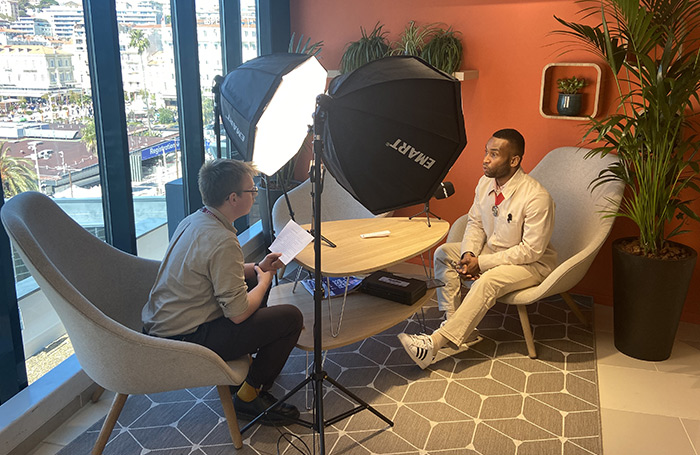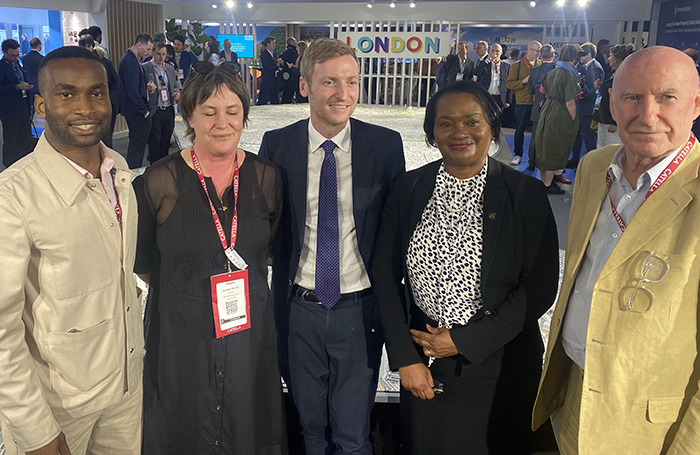Last week I attended my first MIPIM alongside our Chief Executive Dr Valerie Vaughan-Dick and Chair of the Board of Trustees Jack Pringle, as well as a delegation of 28 Chartered Practices. It was an incredible opportunity to engage with global real estate players and gain insights into global trends and innovations.
It also provided us with a platform to demonstrate the critical work we are doing and bring the voice of architects to the table.
Jumping from meetings to debates to receptions, we accomplished a great deal. Reflecting on the week, here are my top five takeaways:
1. We need to engage more young people in design
On the Thursday, I took part in the Challengers conference, which brought together 16 young design professionals, under the age of 30, to pitch their ideas on the future of property development and investment. Each spoke exceptionally well on a range of pressing issues, ranging from climate change to affordable housing, retrofitting to real estate. It was inspiriting to see our future leaders talk with such knowledge, optimism and passion, reinforcing my belief that we need to do everything we can to keep engaging young people in design.

2. Environmental issues dominate the conversation
As it should, the environment took centre stage at MIPIM this year, with the growing recognition that the climate emergency is one of the greatest and most complex problems we face as a profession and wider world.
I had the pleasure of speaking on Monocle’s The Urbanist podcast on architects and how we are leading the way on the climate emergency.
Later in the week, speaking at a Greener Manchester event, I shared two significant pieces of work that RIBA (among other organisations), has been spearheading, that demonstrate the power of collaboration to deliver change.
Firstly, I talked about the Built Environment Carbon Database, a free-to-access software that pulls together carbon data in a single location and functions as the main UK platform to store new carbon assessments and generate both project – and product-level benchmarks.
I also shared the UK Net Zero Carbon Buildings Standard – a tool that focusses solely on whole life carbon to bring clarity to the UK industry on what is required at the asset level to be in line with climate science. More needs to be done in our industry to drive us towards net zero, but it is important to share the good work and progress being made along the way.

3. RIBA is a crucial player on the world stage
A successful week culminated in a great RIBA reception, where we were able to celebrate the role that architects play in delivering high-quality built environment. Chair of the Board of Trustees Jack Pringle spoke about RIBA’s role in addressing the climate emergency and solving the housing crisis, as well as challenging the government to reform our planning system, commit to a National Retrofit Strategy and invest in social housing. We were also honoured to host Lee Rowley, Minister of State for Housing and Planning at the Department for Levelling Up, Housing and Communities, and Annalie Riches, Founding Director Mikhail Riches and past winner of the RIBA Stirling Prize – who both offered their remarks on the state of play.

4. International collaboration remains paramount
In every event I attended, speakers emphasised the value of cross-industry international collaboration. With over 20,000 delegates from over 90 countries, the diversity of knowledge and opinions was particularly enriching.
In terms of RIBA’s own international growth, I was pleased to see our Chief Executive Dr Valerie Vaughan-Dick sign an agreement with Eye of Riyadh, as part of our work to support the global exchange of architectural expertise. Eye of Riyadh will support us as we seek to operate our business activities in Saudi Arabia and collaborate with the Kingdom’s Architecture and Design Commission to champion quality real estate development.

5. AI is here to stay
With all the remarkable developments we have seen within the Artificial Intelligence (AI) field this year, it wasn’t surprising to see that AI was on everyone’s minds. Our own Artificial Intelligence Report, that we released last month, revealed that 41% of architects are now using AI and 43% of those architects believe it has improved the efficiency of their design process. At a keynote speech for Business South on the Tuesday, I shared my views on AI: that it’s the most disruptive tool of our time, but we shouldn't be scared. We need to embrace AI and harness its power to create a more inclusive, resilient and sustainable built environment.
As we continue to develop internationally, opportunities like MIPIM are critical. Not only to increase awareness of RIBA, our Chartered Practices and the value of good architecture, but to allow us to share, learn and collaborate with the wider industry. I came away feeling hopeful and optimistic that we’re all working towards the same thing – to deliver a high-quality, safe, sustainable and inclusive built environment that delivers for everyone.










